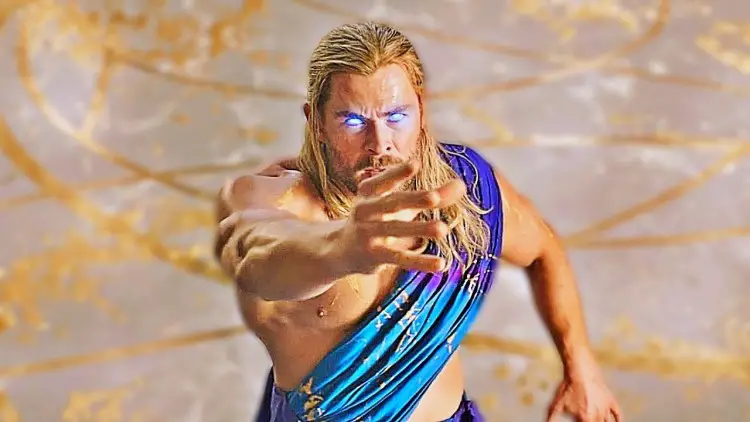
Thor, the God of Thunder, is one of the most well-known figures in Norse mythology. With his mighty hammer, Mjolnir, he has captured the imagination of people around the world, from the Viking Age to the modern day. But who is Thor, and what makes him such an enduring figure in human culture?
In this article, we will explore the mythology and history of Thor, as well as his portrayal in popular culture. We will examine the various legends and stories surrounding him, from his battles with giants to his role as protector of humanity.
Whether you are a long-time fan of Thor or simply curious about this fascinating figure, this article will provide you with a comprehensive overview of his place in mythology and culture.
Origins of Thor
Thor is a prominent figure in Norse mythology, which was practiced by the Germanic peoples of Scandinavia from the 8th to the 11th century. The earliest mentions of Thor come from the 9th century, in poems and sagas composed by Viking poets and storytellers.
These stories were passed down orally for generations before being written down in the medieval period.
Thor was seen as a powerful, god-like figure who could control the elements and protect his people from harm. He was associated with thunder, lightning, and storms, and was seen as a defender against the chaos and disorder of the natural world.
In many ways, Thor embodied the values and beliefs of the Norse people, who valued strength, bravery, and loyalty above all else.
The Legends of Thor
One of the most famous stories about Thor is his battle with the giant Jormungand, also known as the World Serpent. According to legend, Jormungand was so large that he encircled the entire world, biting his own tail to create an endless loop.
When Thor encountered Jormungand, he used his hammer, Mjolnir, to strike the serpent with all his might. Although the blow was powerful enough to shake the earth, it was not enough to kill Jormungand. In the end, the two opponents were destined to battle each other until the end of time.
Another well-known legend about Thor is his encounter with the giant Utgard-Loki. In this story, Thor and his companions are invited to a feast in the halls of Utgard-Loki, who challenges them to a series of impossible tasks. Thor is asked to lift a cat but finds that he cannot budge it.
He is then asked to drink from a horn that appears to be bottomless but is unable to drain it. Finally, he is asked to wrestle an old woman, who turns out to be Utgard-Loki in disguise.
Despite his best efforts, Thor is unable to defeat her. In the end, it is revealed that all of these challenges were illusions created by Utgard-Loki, who was testing the strength and courage of his guests.
Thor as Protector
In addition to his battles with giants and other foes, Thor was also seen as a protector of humanity. He was often called upon to defend his people against natural disasters, such as storms and floods, and was seen as a powerful force against the forces of chaos and disorder.
In many ways, Thor embodied the values of strength, bravery, and loyalty that were so important to the Norse people.
In Norse mythology, Thor was also associated with fertility and agriculture. He was seen as a god of the harvest and was often invoked to bring rain and good weather to the fields.
In this way, Thor was not just a warrior, but also a provider, ensuring that his people had enough to eat and drink.
Thor in Popular Culture
Thor’s popularity has endured long after the end of the Viking Age. He has been portrayed in a variety of forms
in popular culture, from books and comics to movies and television shows. Perhaps the most well-known depiction of Thor in modern times is in the Marvel Cinematic Universe (MCU), where he has been played by actor Chris Hemsworth since 2011.
In the MCU, Thor is depicted as a powerful but flawed hero who must learn to balance his responsibilities as a protector with his own personal desires and weaknesses.
He is shown to be a member of a pantheon of gods but also interacts with humans and other creatures from throughout the universe. In addition to his superhuman strength and abilities, Thor is also depicted as having a sense of humor and a willingness to learn from his mistakes, making him a relatable and likable character for audiences.
Outside of the MCU, Thor has also appeared in a variety of other media, including video games, animated series, and novels. In many of these depictions, he is portrayed as a larger-than-life figure who embodies the values of strength and courage that were so important to the Norse people.
His association with lightning and thunder has also made him a popular symbol in modern culture, appearing in everything from sports team logos to heavy metal band names.
Conclusion
Thor is a fascinating figure who has captured the imagination of people around the world for centuries. From his battles with giants to his role as protector of humanity, he embodies the values and beliefs of the Norse people, while also serving as a powerful symbol in modern culture.
Whether you are a fan of Norse mythology, the Marvel Cinematic Universe, or simply interested in learning more about this iconic character, we hope that this article has provided you with a comprehensive overview of Thor’s place in mythology and culture.
